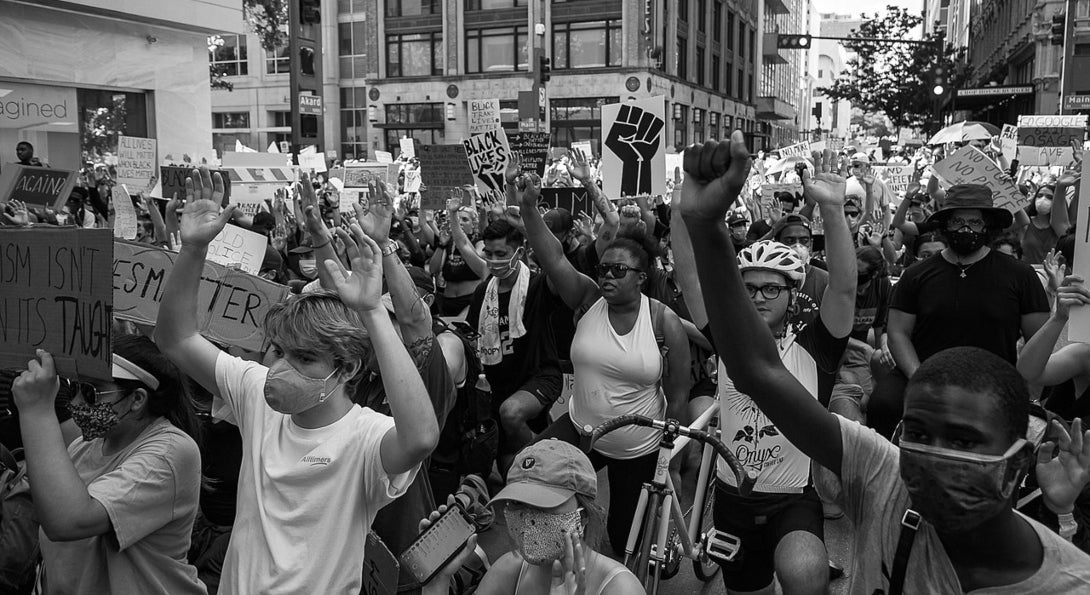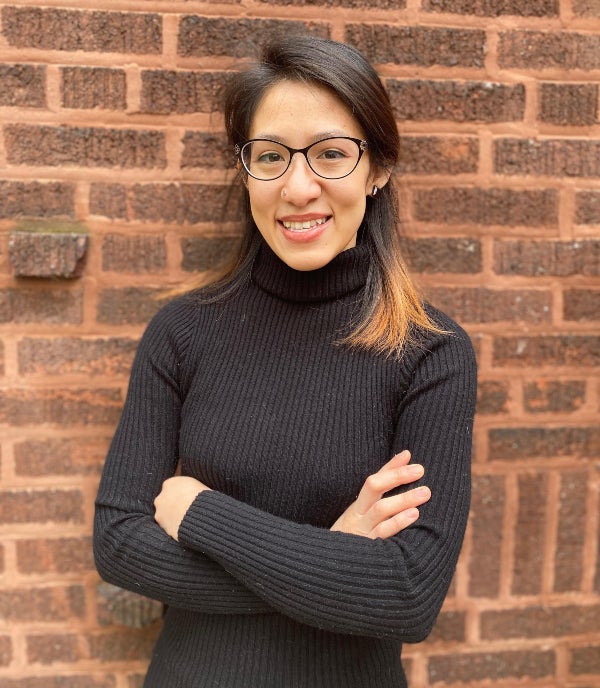Air is life: Black Lives Matter and environmental justice

Op-ed text

Black and Latine community residents are leading powerful direct action to challenge environmental racism Chicago. In the last couple of years, this activism has overlapped with the COVID-19 pandemic and a national reckoning around police violence following the murders of George Floyd and too many other Black people at the hands of police.
Approaching the two- year anniversary of George Floyd’s murder, I write this piece thinking about how Black Lives
Matter (BLM), environmental justice, and Indigenous sovereignty movements feel the weight of what is needed to simply breathe in the legacy of imperialism, settler-colonialism, and racial capitalism.
The concentration of industries in communities of color has been widely referred to as environmental racism, but it has also been argued that environmental racism is insufficient as a framework. Concentrated pollution is but one of many forms of violence following a long history of colonialism and imperialism that has regarded people of color (POC) as disposable1. Kyle Whyte, a Citizen of the Potawatomi Nation and Affiliate Professor of Native American Studies and Philosophy at the University of Michigan, likens the experience of climate change today to a moment of déjà vu for Indigenous nations. Where climate change is seen by people in the Global North as an impending and acute crisis, Whyte says that it is a familiar experience for Indigenous nations who have already experienced the end of their worlds through settler-colonialism2. Ruha Benjamin, Professor of African American Studies at Princeton, uses a similar concept of “afterlives” to convey that slavery has also left a legacy which manifests in the vast economic, social, and health disparities seen today. Oppression didn’t end with Emancipation, but rather evolved into mass incarceration, debt, and structural inequality in public systems, resulting in Black people today not having the conditions to live3. For Latine folks, there is also a long history of state violence that includes having our homelands taken through settler-colonialism in the Americas; wars and false treaties along the southernmost part of the US; neoliberal policies that fostered international exploitation; and police violence in the form of Immigrations and Customs Enforcement.
To understand contemporary health, social, and environmental injustices, one must not see them as siloed forms of violence but rather continuations of historical oppression dating back to colonialism. Understanding contemporary violence as déjà vu not only requires a historical perspective, but also opens paths for multi-generational and cross-movement solidarity moving forward. Our ancestors who have navigated crises before become central in helping us to resist and navigate crises4. In the BLM movement, “Say Their Names” has taken hold as a powerful way to remember, honor, and fight back for those whose lives are taken too soon3. Murals dedicated to George Floyd create open public spaces that are both memorials and the fuel for future action. Indeed, the Stop General Iron Campaign in Chicago evoked cross- movement themes from BLM when youth at protests held up signs marked “Let Us Breath” and “We can’t study if we can’t breathe.” Such connections across movements and time open new paths for how POC can resist oppression and explore realities in which living on earth in reciprocity across people and creatures is the basis for mutual survival.
What is briefly offered here are lessons from social justice activists and scholars of color that can help researchers and advocates in health, social, and environmental justice spaces to understand history in order to re-imagine the future. Importantly, reframing today’s violence as extensions of colonialism can also bring into view the importance of land relations and how land theft, displacement, and extraction are all connected. This opens new questions not just about pollution but about fundamentally changing relationships with the land from which there is much to learn from Indigenous comrades. In solidarity across our movements, Latine, Black, and Indigenous people can and are learning from each other to make both cultural and structural change to restore relationships with each other and the earth. Solidarity is how we create new worlds where we can breathe, together.
Acknowledgements
Maggie Acosta is the assistant director of community engagement with SPH’s Collaboratory for Health Justice.
This op-ed was originally drafted as a paper for a Gender and Women’s Studies Course: Feminist Environmentalisms taught by Dr. Ronak Kapadia. Much of the thinking in this paper is inspired by the activism of the Stop General Iron Campaign, in particular the work of the United 10th Ward, the Southeast Environmental Task Force (SETF), and the Southeast Youth Alliance as well as the undergraduate, graduate, and doctoral students in the GWS course mentioned above. The UIC School of Public Health is a partner with SETF through the Chicago Center for Health and Environment (CACHET) funded by NIEHS. This work was done outside of grant funding.
References
- Sze, J. (2020). Environmental justice in a moment of danger. In Environmental Justice in a Moment of Danger. University of California Press.
- Whyte, K. (2017). Indigenous climate change studies: Indigenizing futures, decolonizing the Anthropocene. English Language Notes, 55(1), 153-16.
- Benjamin, R. (2018, July 16). Black Afterlives Matter: Cultivating Kinfulness as Reproductive Justice. Boston Review.
- Whyte, K. (2018). Indigenous science (fiction) for the Anthropocene: Ancestral dystopias and fantasies of climate change crises. Environment and Planning E: Nature and Space, 1(1-
2), 224-242.